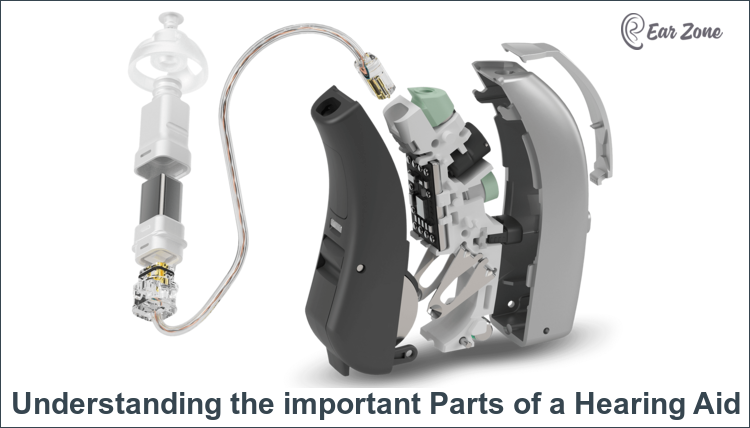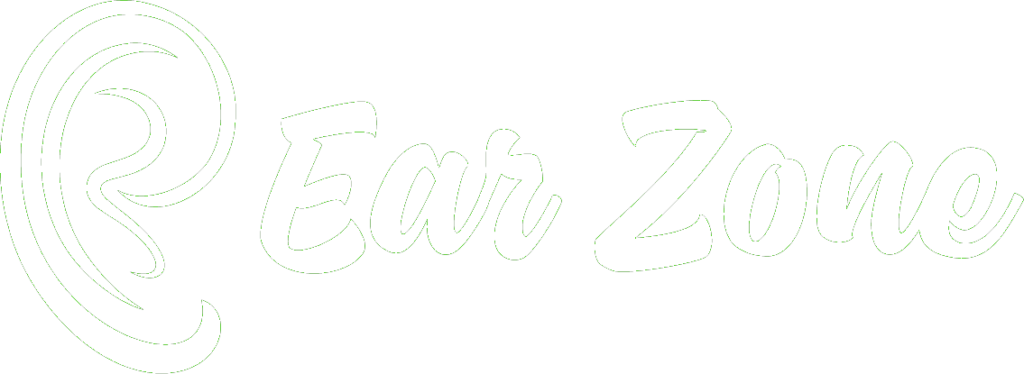Millions of people worldwide rely on their hearing aids to participate in conversations, hear the sounds around them, and manage their lives independently and confidently. What if the hearing aid suddenly stopped working? Despite technological advances, hearing aid complaints remain common, leading to frustration. If you are experiencing problems with your hearing aids, read on as we discuss common hearing aid issues and offer practical suggestions to fix them.
What Are the Common Hearing Aid Complaints?
In this blog, we cover problems with hearing aids. Adapting to new hearing aids is a different topic. If you are facing problems with your new hearing aids, read our detailed blog on getting used to hearing aids.
Our team spoke to a few hearing aid users and checked popular hearing aid forums on Reddit, Quora, and a few Facebook groups. We compiled a list of common hearing aid problems and how to solve them.
Why Do Hearing Aids Squeal?
Problem: Your hearing aids are squealing or whistling, the sound is unbearable and you cannot understand speech.
Technical explanation: Hearing aid squealing or whistling is technically known as hearing aid feedback. In simple terms, the already amplified sound coming from the speaker or receiver of your hearing aid leaks from the ear canal and is picked up by the microphone and reamplified. The double amplification causes the hearing aid speaker (receiver) to emit a loud unbearable whistling sound.
Hearing aid feedback causes
The common hearing aid feedback causes are:
- Poor hearing aid fitting: If the hearing aid or dome does not fit well in the ear canal, sound escapes from the sides causing squealing or whistling.

- Earwax buildup: Sound can bounce off the earwax accumulated in the ear and is picked up by the microphone causing feedback.
- Hearing aid too loud: For some reason, you may have turned up the volume. The sound leaks out if it is too loud, causing whistling.
- Mechanical Issues: If your hearing body has cracks or the tubing of the BTE has cracked, the sound will leak and cause feedback.
How To Stop Hearing Aids from Squealing
- Solution for a poorly fitted hearing aid: Start with reinserting the hearing aid. Pull the earlobe gently to enlarge the ear canal, which helps the hearing aid to slide in and fit properly.
If the whistling does not stop, visit your audiologist for advice; maybe the earmold or the shell has to be sent back to the factory for remaking. - Solution for hearing aid whistling due to earwax: If you have the confidence, try out the home remedies. Dr. Howard LeWine, a practicing internist at Brigham and Women’s Hospital in Boston has some advise for earwax removal.
Visit your audiologist or ENT doctor if the earwax is hardened and the home remedies do not work. Ear irrigation or ear syringing is commonly used to flush out accumulated earwax. - Solution for hearing aid squealing due to high volume: Reduce the volume of your hearing aid, the whistling should stop; if you cannot hear at the reduced volume, you should meet your audiologist. Your hearing aid requires reprogramming to increase the output. Otherwise, it will be sent for repairs to check if the internal parts are functioning properly.
- Solution for mechanical issues: If the hearing aid is dropped, the shell may crack, and sound can escape through the cracks, causing feedback. Visit your audiologist or contact the authorized service center.
Discomfort or Pain While Using a Hearing Aid
Problem: The earmold hurts or hearing aid is too tight.
Cause of discomfort or pain: The ear impression taken for the earmold was not precise, or the earmold lab made the earmold or the in-the-ear hearing aid shell slightly oversized.
Solution for earmold discomfort
Use a moisturizer or an anti-allergy cream, it could be a temporary skin irritation. If it does not solve the issue, meet your hearing aid dispenser, and get a new earmolds made. If your ears are sensitive, discuss with your audiologist whether you can use domes or canal earmolds.

Hearing aids falling out
Problem: Your hearing aid keeps falling out or the dome keeps falling out.
Technical explanation: Your hearing aid earmold or domes are not the right size or being obstructed.
Why won’t my hearing aid stay in my ear?
The following could be one of the reasons for your hearing aids falling out:
- You are not inserting the hearing aid or the earmold properly.
- Check for earwax accumulation, earwax can prevent the hearing aid from fitting properly in the ear canal.
- The hearing aid is too tight and does not fit into the ear canal, or is slightly loose and keeps falling out.
- Hearing aids can fall out with jaw movement. This often occurs while eating.
- Hectic physical activity.
How to keep hearing aids from falling out
- A simple hack is to gently pull the earlobe to enlarge the ear canal opening. This helps the hearing aid to slide in smoothly.
- Get your ears checked for earwax. Clean your ears so the hearing aid fully slides in and fits properly.
- The ear size changes with age, get a new shell or earmold made. Replace the domes, they need to be replaced every few months.
- If the hearing aid slips out during jaw movement, talk to your hearing aid fitter. It is a fitting issue.
- If you sweat a lot, or the hearing aid falls out during sporting activities, use hearing aid headbands or clips to keep them in place.
Hearing aid battery life
Problem: Your hearing aid battery consumption is high.
Technical explanation: The manufacturer specifies the average hearing aid battery life in hours and not days. Note the time you switch on and off your aids. Hearing aids used at higher volumes tend to consume more battery power.
Factors contributing to high battery consumption
- Streaming: If you use Bluetooth frequently for mobile phone connectivity or music streaming, your battery usage will increase.
- Battery age: If you are using rechargeable batteries, the working time after every recharge gradually decreases depending on the age of the batteries.
- Moisture and sweat: These can adversely affect battery life.
- Battery manufacturing date: Older batteries tend to have shorter lifespans.
- Battery quality: The overall quality of the battery impacts its longevity.
Solutions to Address High Battery Consumption in Hearing Aids
- Reset Features: If not in use, reset any unused features on your hearing aid. Switch off audio streaming when not needed.
- Monitor Rechargeable Batteries: Over time, the capacity of rechargeable hearing aid batteries decreases. For instance, a new battery might last 24 hours after a full charge, but after a year, it could drop to 14 or 16 hours. Consider investing in a portable charger.
- Use a Dehumidifier: Store your hearing aids without the battery in a dehumidifier, keep the battery compartment open. Clean the battery with a dry cloth before inserting in the hearing aid.
- Check Expiry Dates: Always verify the expiry date before purchasing batteries.
- Choose Reputable Brands: Buy batteries of well-known and reliable brands.
- Battery Storage: Store batteries in a dry cool place.
Hearing Aid Music Distortion
Problem: Your hearing aids distort while listening to music or you do not enjoy music with your hearing aids.
Technical explanation: The hearing aids are designed to amplify speech frequencies which fall between 250 Hertz and 8000 Hertz. Whereas, music has a broader frequency range, starting below 250 Hertz and extending to about 16,000 Hertz. Sound beyond 8,000 Hertz results in hearing aid music distortion.
Secondly, hearing aids have compression and anti-feedback functions that are good for speech but can distort the music. Hearing aids cannot handle the wide dynamic range of music.
Solution for listening to music with hearing aids
Listening to music with hearing aids is possible, you have two options to enjoy music with hearing aids.
Brands offer hearing aids with extended frequency response for listening to music. Change the hearing aid program from speech to music using the program change button.
Buy a hearing aid with an extended frequency response and Bluetooth streaming option. Once you are in music streaming mode, your hearing aid will automatically turn off the compression and anti-feedback functions.
Hearing Aid Care and Maintenance
Problem: your hearing aids sound low or distort the sound.
Technical explanation: There are many reasons for your hearing aids to sound low or distorted. It could be as simple as earwax blocking the wax guards or dust covering the microphone cover.
You can prevent hearing aid issues, save many a trip to the service center, and extend the life of your hearing aids if you follow the basic hearing aid care routine.
Hearing aids should be wiped dry every day before retiring at night. You should also clean your hearing aids every week.
We advise you to read this blog on hearing aid maintenance, the blog covers maintenance tips, daily hearing aid maintenance checklist and the weekly maintenance checklist. The blog clearly explains how you should clean the domes, and how microphone covers and wax guards are replaced.
By understanding common issues and following the troubleshooting steps outlined in this blog, you can ensure that your hearing aid continues to provide you with the best possible sound quality and comfort.
Remember, if at-home troubleshooting doesn’t solve the problem with your hearing aids, seeking professional assistance is the best course of action.




